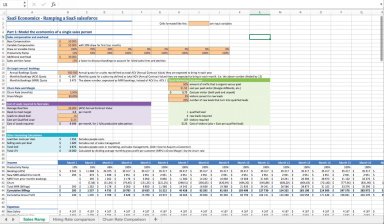
Last version published: 26/01/2017 13:26
Publication number: ELQ-46632-3
View all versions & Certificate

The Economics of SaaS - Gearing up a SaaS salesforce
Using a salesforce for CEOs, VP’s of Sales to understand the economics of a SaaS business.
Further information
The model is basically built for companies with a sales force and that experiences recurring revenues.
Do not apply the model to businesses that do not have a sales force!
These are businesses that have what I like to call "Touchless conversion", which translates into sales without touch. Typically, such type of firms have lower investment rates in their sales and marketing expenditures, and tend to be positive in their inflow of cash much earlier.






